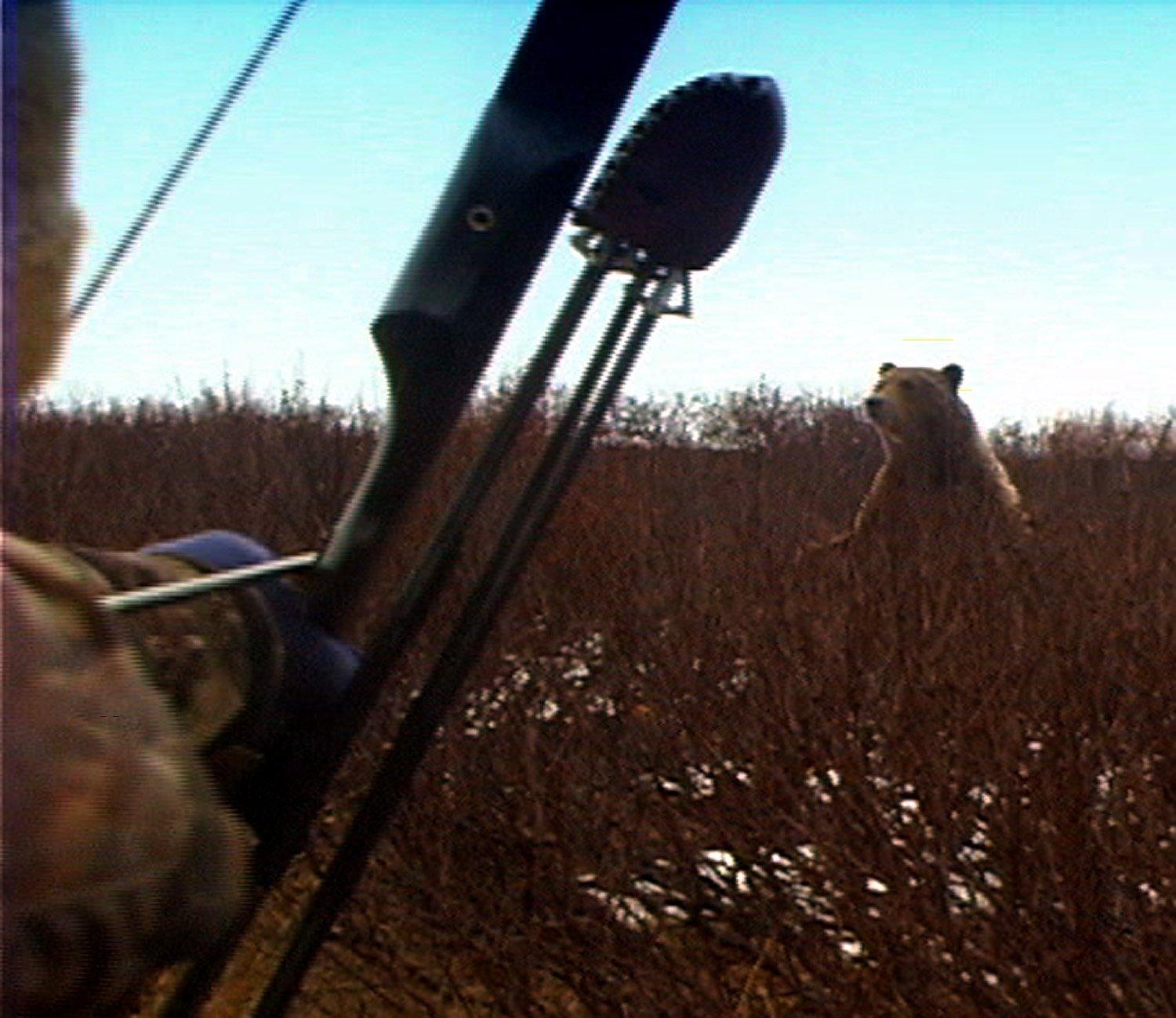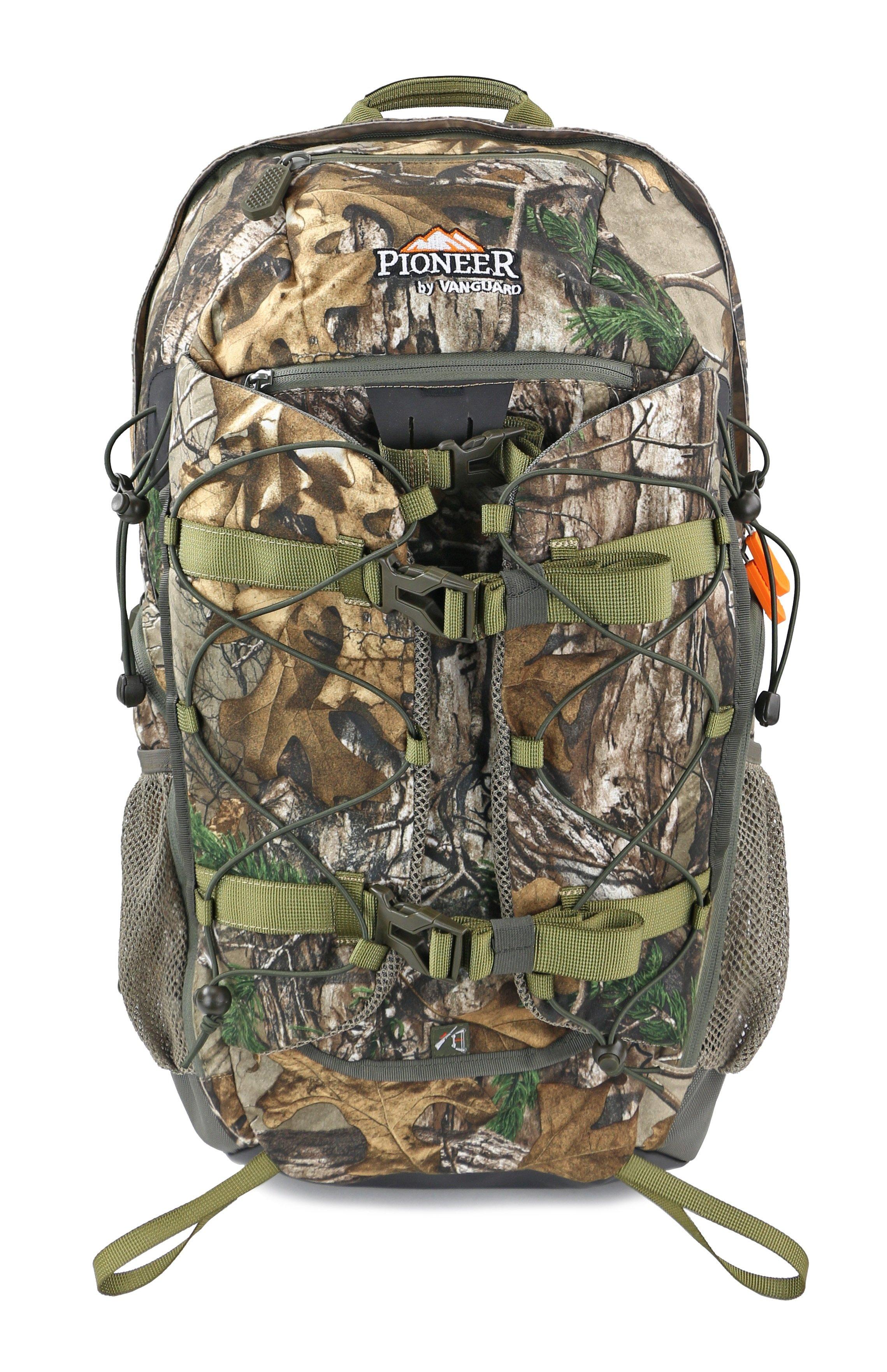Have You Ever Hunted These Formidable Critters?
Death is always near. None of us are sure of what form it will assume when it arrives, but when it does, you'll recognize it, if only at the last second. With luck on your side, you'll have more time and maybe escape it or fight it off with something … like the help of a friend, a doctor's knowledge or even a trusted firearm. If you are really lucky, it will simply come right at you and then stop, gazing upon your trembling form before disappearing back into the shadows from where it came, a renewed appreciation of life suddenly washing over you like a baptism.
That's how it came for me one cold, rainy December morning among the sodden, tree-littered slopes of Kodiak Island in Alaska. I was hiking across a small mountainside clearing in search of black-tailed deer. Behind me was Derrick McDonald, who worked for SureFire, and Matt Hage, a freelance photographer there to chronicle the hunt. To my left, I heard the sharp crack of a limb in the woods. Hoping for a blacktail buck bounding from its daytime bed, I spun in that direction, my right hand dropping to the stock of the Remington Model 700 slung over my shoulder. But my eager optimism instantly transformed into apprehension. A brown bear the size of a small truck rose from a tangle of fallen trees less than 50 yards away.
Oprah likes to call those times in a person's life when they suddenly make a life-altering realization an Ah-Ha moment. In the outdoors, these moments are all too frequently best described as Oh Sh… moments. Without warning, the giant beast turned and charged from the shadows. It was erasing the distance between us with suffocating speed.
Bear, bear, bear, I shouted as I attempted to spin the .30-06 to my shoulder. Instead, the sling hung up on my pack frame, causing the rifle to twist away under my arm. I backpedaled in an effort to buy myself a few more precious moments before the creature was atop us, my left hand finally snatching the gun free. I took aim. Beside me, McDonald dropped to a knee and attempted to steady the barrel of his own rifle, a 7mm Remington. Our calibers were more suited for deer than charging bears. Hage, an Alaska native who had experienced grizzly charges before, began yelling and waving his hands to frighten the bear.
Safety off and finger on the trigger, the bear's head filling the objective lens of my 3x9 scope, I had no choice but to hold the shot until the bear cleared the trees at the edge of the small meadow a mere 40 feet away. I would only have time for one shot before it would be upon us. I couldn't afford to shoot a tree instead. This one had to count.
Then, at the wood's edge, as quickly as it had charged, the bear stopped, turned and ran back into the woods. Before my mind could fully register what had just happened, the bear was gone, disappearing like some dark wraith.
Crisis averted, my legs began to tremble and my knees weakened. Only the fear of a return charge kept me on my feet. The entire incident had begun and ended in a matter of seconds. Looking at each other with relief, the three of us broke into laughter.
The Ultimate Hunt

In fact, Eichler is the unwitting player in one of the most dramatic grizzly charges ever caught on camera.
It was during one of my bow hunts. We were floating down the river in search of a new camp location when we happened upon a momma grizzly and three cubs, Eichler says. The sow left the bank and went back into the woods, but the cubs were curious and stood there looking at us.
"The current of the river continued carrying us along, and I guess the sow felt we were getting too close. Suddenly she came charging from the brush into the water and right for our raft, Eichler says. His guide amazingly grabbed his sidearm and shot into the water right in front of the bear, which probably wasn't 8 feet away from coming aboard the raft. The concussion of the shot in the water turned her around. The sow and her cubs then all retreated. If you want to get a feel for the intensity of a grizzly charge without actually experiencing one, click here to watch Eichler's video.
Preparing for the Hunt
"When you are going into a grizzly hunt, you have to be prepared mentally and physically, Eichler says. Most grizzly hunts run from 10 to 15 days, and hunters can cover as much as 15 miles a day walking and glassing. You had better be in shape. Unlike a whitetail or turkey hunt, a hunter may only get one chance at shooting a nice bear. He doesn't want to be out of breath or too worn down to go after it when he spots it.
"You also have to mentally prepare for the idea that you are hunting something that could kill you, Eichler says. While not every situation can be controlled, you want to be confident with your rifle or bow, and have the steel to respond to a charge or bad situation in a way that doesn't make things worse. Running is the last thing you want to do. It triggers a chase response in a bear the same as it does a dog — and nobody is going to outrun an angry bear.
"For the most part though, if a hunter spots a bear first, makes the right approach with the wind in his face and is confident in making the shot, it's statistically rare that a hunter ever is in danger.
You want to keep the wind in your favor and get close, but not too close, he says. If you get right up on one, you stand the chance of having it charge you. That's less of a concern for rifle hunters, who can shoot from several hundred yards out, but more critical for bowhunters. You'll want to be proficient with a bow out to at least 40, 50, maybe even 60 yards. The 25-yards-or-less shots common to deer hunting aren't something you want to do by choice when hunting grizzlies.
As far as preferred rifle calibers go, Eichler says anything you shoot most accurately is what you should use on your hunt. He used a .30-06 on his own gun hunt.
I've killed them using just a recurve, so I figured the .30-06 would do just fine, he says. And it did. But he concedes that most guides will likely be more comfortable with a hunter carrying something in the .300 to .338 range at least.
Plan Your Adventure

Gregg Severinson, director of Cabela's Outdoor Adventures Division, has helped a number of sportsmen plan their hunts for grizzlies and brown bears, the difference between the two being where they are found. Brown bears are found along Alaska's southern coastal regions. Grizzlies are farther north and inland throughout the Alaskan interior, British Columbia and portions of Alberta and the Yukon. Other than that, they are basically the same species.
If you want a true grizzly, and not a brown bear, I think the best opportunity to kill a nice one is in the northwest Alaskan coastal range, says Severinson. Success rates among the region's outfitters are as high as 95 percent. Interior hunts can be tougher if only because the bears are more spread out and can be more difficult to find. Interior hunts can also be more physically demanding given the rugged terrain to be traversed.
For older or less agile hunters, I usually recommend a spring coastal hunt for grizzlies or brown bears, Severinson explains. On those hunts, most bears are taken along the shoreline where they can be glassed by boat before a hunter goes ashore and puts on a stalk. More area can be covered by boat as well.
If you're interested in getting a grizzly but are intrigued by the idea of scoring on another species native to the region, Severinson urges hunters to consider a fall combination hunt in the interior. On those hunts, a person can purchase a hunt for caribou, moose or sheep and only pay a trophy fee for the grizzly if they get one. That takes some of the risk out of plopping down the cash for the cost of a bear hunt and potentially coming home empty handed.
With the economy struggling like it has, there are some great deals to be had — relatively speaking of course. Cabela's recently worked with an outfitter who was selling combination hunts in the Brooks Range of Alaska that included the chance for both a Dall ram and a grizzly bear for right at $15,000. That's the cost some guys generally pay to hunt just one of those species.
Gear Review: Vanguard Pioneer 2100RT in Realtree
Eichler has seen some grizzly hunts recently going for as low as $6,000 and $7,000, though hunters often need to be flexible in their plans and willing to take last minute slots that open up due to cancellations.
If you can be flexible with your schedule, you'll find you can get a much better deal, Eichler says. He urges prospective bear hunters to shop hunts around. Go online and talk to biologists and wildlife officers who work the areas that you would like to hunt. Get the low-down on reputable outfitters and then, just like buying a car, call and see what kind of deal you can get. If an outfitter has an open slot, you might be able to score one of the most exciting adventures in North America for a lot less than you'd ever expect.
Don't Miss: The Hunt for a Kodiak Island Brown Bear
Editor's Note: This was originally published on June 21, 2011.
Are you a big game hunter wanting to learn how to accomplish your goals? Check out our stories, videos and hard-hitting how-to's on big game hunting.








